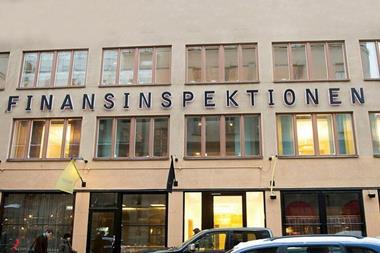The Danish investment market was very active in the first half of 2004 with several large transactions being carried out, including the sale of two retail flagship department stores for around DKK1.5bn (e200m). Fully-let office premises on long were are in high demand, especially by the German open-ended funds and local pension funds, but as a consequence of the weak office letting market, such investment opportunities are currently very scarce resulting in limited investment activity.
Investors are reluctant to accept yields below 6.25% for fully-let prime office premises and seem to prefer other markets or property types. Nevertheless, pension funds are still willing to acquire fully-let prime office properties on low yields if they have lease terms in excess of 10 years. Secondary offices in the central parts of Copenhagen are still sought after, despite the high vacancy rates, mostly by private investors. It is expected that investment activity will increase in the coming years with the anticipated recovery in the letting market.
The retail investment market is experiencing some interest from foreign investors. Units on high street locations and shopping centres are keenly sought after by international property funds such as those managed by Rockspring and Aberdeen Property Investors. International investors face fierce competition from aggressive tax driven partnerships, capable of paying good prices for retail premises.
Especially smaller properties, of up to DKK150m, are very attractive to tax driven investors. Several Danish investment funds have also been launched targeting retail assets with good rental income. Retail investment activity is expected to remain strong in the coming years due to the active letting market and the existence of plenty of development opportunities.
The Danish residential investment market is one of the most active at the moment. Demand is primarily driven by private individuals buying owner occupied apartments and houses in the central Copenhagen area. Prices on residential premises have continued to rise during 2004 and are expected to continue rising in the coming years with the new loan types also available to private investors. The cheap and flexible financing has caused downward rental pressure, especially on units that are rent controlled.
As a consequence, pension funds and property companies are somewhat reluctant to invest further in such units. Investor focus has shifted towards regulated youth and student residences and some properties under multi-ownership schemes. Older residential units, which are rent controlled, are still in high demand from institutions but are rarely offered in the market. We expect this segment to see gradually more active investment as a consequence of the rising prices of owner occupied premises.
The industrial investment market is highly illiquid and dominated by owner occupiers. The market attracts virtually no interest from domestic institutions, although the tax driven partnerships are still highly active in the market for smaller industrial premises. Some international players have shown some interest in the sector and are mostly active within sale and leaseback transactions with long lease structures.
Office letting markets have remained weak in Copenhagen throughout 2004, with the vacancy rate in the Greater Copenhagen area rising slightly to reach 8.7% in December 2004, from 8% at the beginning of 2004. In general, it seems more difficult to let larger space units, while smaller units continue to be let easily. This could imply that the letting market is recovering and that coupled with more restrictive development activity, vacancies are set to decrease in 2005. Indeed, development activity within the sector has slowed dramatically over recent years and development projects are currently only being carried out if significant levels of pre-letting can be secured beforehand. There is literally no speculative development activity.
The retail letting market has been very active in Copenhagen in 2004. Private consumption has continued to show positive growth due to tax cuts and cheap financing options, and several of the larger international and national retail chains have entered the Copenhagen high street market with new flagship stores. An overall trend has emerged whereby smaller local retailers are being pushed out into secondary high street locations while the increased letting activity by retail chains is causing upward pressure on rents.
As a consequence of the active letting market there are currently several new developments in progress around the city high streets, including the development project by Keops and AIG of transforming the older CityArkaden into 10,000 m2 of prime retail space. The new shopping centres, Fisketorvet and Fields, are performing well and are able to attract customers as well as stable tenants. Retail vacancy rates are very low at around 2% for the Greater Copenhagen region and despite the increase in new retail space, vacancies are not expected to increase in the near future.
The demand for apartments in the Greater Copenhagen region, especially in the central parts of the city, has remained strong in 2004 and has been boosted by several new attractive mortgage loan types, which have contributed to rising prices. As a consequence many developers have shifted their focus towards residential development despite the high costs of doing so. Currently the largest part of development activity in the central district is residential.
Owner-occupied residences are currently mostly in demand, while vacancies are beginning to rise in new properties, available for rent. The rising vacancies of new rental premises has been caused by the attractive financing options, the low cost of capital and the large supply of new residences. In contrast, older rental residences have lower vacancies, due to strict regulations limiting rental increases. In recent years an increasing number of office premises have been converted and redeveloped into apartments in prime locations. This trend has intensified further in 2004 with a trebling of the number of projects and it is expected that the conversion of offices to residential will decrease the current office vacancy rate in the next years.
The industrial property market in Denmark is highly dominated by owner occupiers, which in turn explains the very low vacancy in the sector. The vacancy rate has, however, increased over the past 12 months and is now stable at around 4%. The increase in vacancy is a result of several large tenancies being vacated west of Copenhagen where the premises are old and gradually becoming more and more unattractive to new tenants. Development activity within the sector has slowed significantly but it is expected that logistic premises around the ring roads will be a future opportunity for both developers and investors.
Jon Lekander, Aberdeen Property Investors. Rune Kock & Alessandro Bronda, Catella Property Group












No comments yet